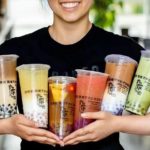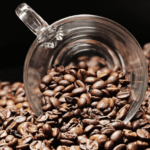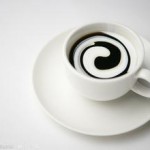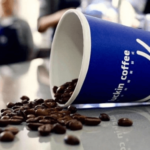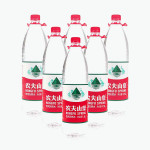Beverage market in China – What do Chinese people drink?
Do you need to be regularly updated on the Chinese market? Follow us on LinkedIn here
The beverage market in China is one of the fastest growing markets in the Chinese food industry. According to Jihong He, the Chairman of China’s food circulation association, the beverage market in China will become the biggest worldwide by 2015. Production of Chinese beverages underlines this trend as it illustrates a 10.34% growth rate for January to May 2014, compared with the previous year. In this period Chinese beverage manufactures produced an output of 64.766 tons of beverage. From 2001-2014, the average growth rate of the production of beverages in China is about 13%. The potential of this industry is also shown in the fact that in 2012, a Chinese person consumed 96 liters of beverages on average, whereas an American consumed approximately 263 liters.
The revenue rate in the beverage industry in China is currently more than 30%. However, it is a highly competitive market with new trends, and a resulting challenge is a relatively low level of loyalty towards beverage brands. This is why firms are investing heavily in new strategies to cultivate brand loyalty: Coca-Cola for example will invest 4 Billion US-$ in 2015-2017. Coca-Cola holds a market-share of about 16 %, which is slowly decreasing. The American beverage powerhouse has to deal with ever-changing consumer preferences in the Chinese beverage market. Chinese people nowadays prefer healthier drinks and local herbal teas. In some parts of China Coca-Cola is out-sold by local player JDBand its herbal tea “JDB Red Can”. (see : http://www.scmp.com/business/china-business/article/1314083/herbal-drink-giants-recipe-home-grown-success)
New trends on the Chinese beverage market
As living standards have improved in China, beverage consumption has changed. Consumers are searching for a greater diversity of products, and further, have become more and more discerning. Because of several scandals in China’s food and beverage industry, consumers’ top priority in this sector is confidence about the product’s safety and integrity. Moreover, there is a trend towards healthy living is going on.
As a result, Chinese customers set value on high quality products that are pollution-free and safe, and are trending towards imported food and beverages. Other preferences include beverages that promote a better lifestyle, with nutritional value playing a crucial role in the choice of the product. As a consequence milk and protein beverages have enjoyed an increase in popularity. Convenience and freshness are also important to Chinese consumers, however safety and quality outweigh all the other factors. Because of these trends in consumption preferences, the popularity of traditional carbonated drinks is declining.
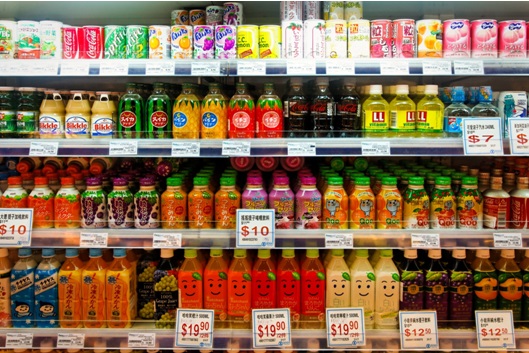
What do Chinese people drink?
Water
Water is a growing segment of the beverage industry in China. The Growing rate of Mineral Water in 2013 was about 16% and for 2014 it is about more than 20%. The growth rate for high-end mineral water like Baisuishan, Kunlunshan, and Evian is even expected to be at a level of 40%.
Coffee
Chinese people are drinking far less coffee than people in other countries: In 2014, the consumption of coffee by Chinese people is 5 cups annually, compared to 240 cups worldwide. However, the market has potential as it was growing with a 7%-rate in 2014. The demand especially for coffee drinks and fresh coffee is rising. For example, the growth ratio of fresh coffee in 2014 was going up to 22.1%. Another trend in the coffee sector is the desire for more high-end coffee.
The total sales volume of the coffee industry in China has reached 70 Billion RMB in 2015 and is expected to reach 300 Billion RMB in 2020. Brands like Coca-Cola, Suntory and Wahaha are producing bottled and canned coffee beverages in the Chinese market. Ready-to-drink coffee at 4-7 RMB finds itself between the ultra-cheap instant coffee (1-3 RMB) , and expensive café coffee (15-40RMB). Starbucks is recognized as the premium coffee brand in China, and has it’s own bottled Frappuccino coffee for 15-22 RMB, which is the top of the bottled coffee market.
 Carbonated Beverages
Carbonated Beverages
Due to the ongoing health trend in the food and beverage market in China the demand for carbonated beverages is declining heavily. The market share of carbonated beverage was dropping from 36% in 2000 to under 25% in 2013. Moreover, it is hart to enter this market as the two market players Coca-Cola and Pepsi share nearly all the market power.
Coca-cola, as the first foreign RTD brand which entered China in the 1920s, and again in the 1970s. Pepsi followed its step into China in the 1980s. The target consumer of both brands is teenagers and young adults.
Juice
In 2013, the juice beverage industry and had a market value around 13.88 billion US-$. With the increasing spending power of the middle class, the juice market revenues are expected to climb to an annual amount of 25 billion US-$ by 2017. Chinese traditional health juice is new fashion. The first very popular in this sector was the Rock sugar Sydney Beverage: Uni-President, Master Kong, Wahaha, Jinmailang all launched this type of beverage in 2011. In the ongoing years nearly all the market players developed and diversified their production line for Chinese traditional healthy juice.
Tea beverage
The classical and traditional drink in China is tea (see: http://www.china.org.cn/learning_chinese/Chinese_tea/2011-07/15/content_22999489.htm). This is why the tea beverage industry boomed in the early 2000s. In 2009, the consumption reached 9 million tons, representing 10% of the total beverage market. Therefore this market became the third largest beverage market in China after carbonated beverage and mineral water. However, the market is now about to shrink. In 2014, the declining rate of the tea beverage in China was 3.6%. As a consequence Nestle Ice Tea for example left the market. The main reason for the declining is trend is health concern. The high sugar ingredients in the tea beverage is pushing consumer away.
The bottled tea market in China has entered maturity stage in which the brand concentration trend is getting more and more obvious. A trend to be noted is the popularity of milk tea, a sweet-modern twist on the traditional drink, urban consumers of milk tea are a quarter billion, and 71% are 15 – 25-year-old females.
Milk and Protein beverages
The Milk and Protein market is about to grow fast in China: In 2013, the growing rate was at 23.46% and the total revenue of the market is 89.522 billion RMB. Nowadays, the main market player in milk sector is Wahaha, and in the protein beverage market the main power is shared by Six Nuts, Lulu, Island of Coconuts and Yinlu. In 2014 and 2015 more and more competitors were about to enter the market due to its potential.
China’s dairy market has been growing since the 1990’s and is predicted to become the world’s largest dairy market by 2022.
Daxue consulting understands China’s food and beverage industry, and can help you dig deeper
If you want to know more about the food and beverage industry in China, or about market strategy do not hesitate to contact us at dx@daxueconsulting.com
Follow us on Twitter too:
How innovations in #China will change the world: From Artificial Intelligence to #mpayment https://t.co/Ne76zybkJF pic.twitter.com/ZlvQq7fz7q
— Daxue Consulting (@DaxueConsulting) August 18, 2017



